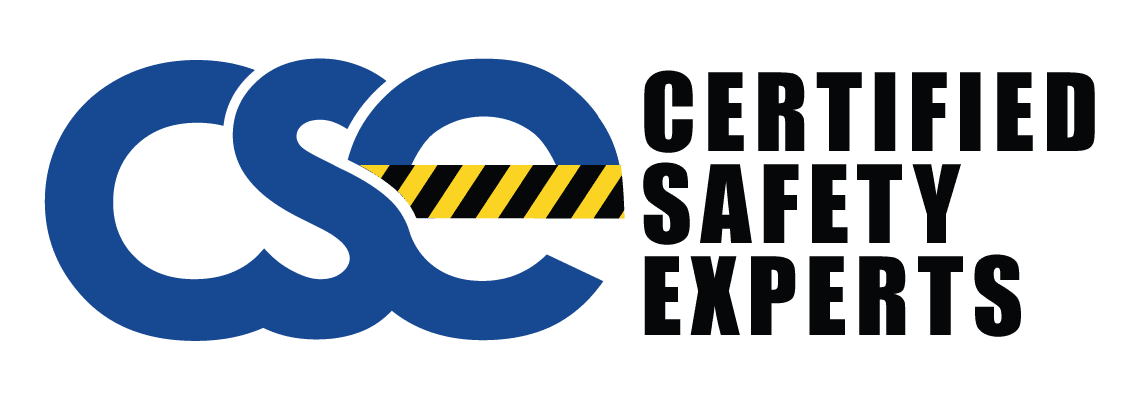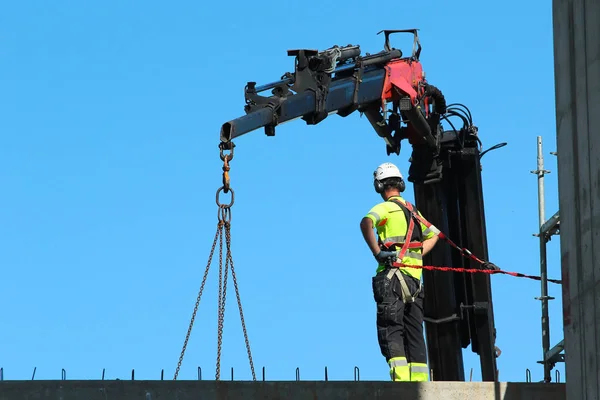Rigging and lifting are fundamental aspects of many heavy equipment operations, particularly in construction and industrial environments. Rigging involves the use of equipment to facilitate the safe movement of heavy objects, while lifting refers to the machines that help elevate or transport materials or workers. Together, they form a critical component of site safety and efficiency.
Certified Safety Experts offers in-depth training in rigging and lifting to ensure your team is equipped with the knowledge and skills to operate safely and efficiently.
What is Rigging?
Rigging refers to the set of tools and equipment used to secure or lift heavy objects on a construction site or industrial environment. It often includes ropes, chains, slings, and hooks to create a secure lifting setup. The goal of rigging is to safely move and position materials, machines, or other heavy objects to their desired location without causing damage to the load, surrounding equipment, or workers.
Common rigging equipment includes:
- Wire ropes: Used for securing and lifting heavy loads.
- Turnbuckles: Used to adjust the tension of cables and ropes.
- Clevises: Connecting hardware for rigging.
- Jacks: Used to lift heavy items before securing them with other rigging equipment.
- Shackles: Heavy-duty connectors for securing loads to lifting points.
Rigging is a critical part of most construction sites and industrial facilities, helping to move materials like steel beams, heavy machinery, and large equipment.
What is Lifting?
Lifting refers to the operation of machines that assist in raising or lowering heavy objects or workers. Lifting equipment includes various types of machinery designed to reach high places, move heavy loads, or transport materials over different terrains. Some of the most commonly used lifting machines include:
- Boom Lifts: These machines feature a telescoping arm to extend vertically and horizontally, allowing workers to access high places.
- Scissor Lifts: Ideal for lifting workers vertically to reach high places, often used in construction, maintenance, and warehouse settings.
- Forklifts: Common in warehouses and industrial settings, forklifts are used for lifting and transporting heavy materials over short distances.
- Man-lifts: These lifts are specifically designed to raise workers to heights safely.
- Aerial Lifts: A category of lifting equipment that includes aerial platforms supported by vehicles, such as boom trucks, used for lifting workers or materials to elevated positions.
Each type of lifting equipment has its unique characteristics, and the choice of equipment will depend on the type of task and job site requirements.
Types of Rigging
The specific type of rigging used on a job site depends largely on the weight, shape, and type of material being moved. There are various rigging methods, but the most common ones include:
- Rigging Hooks: Essential for securing slings or chains to lifting points.
- Pulleys and Blocks: Used to change the direction of lifting forces or reduce the amount of force needed to move heavy loads.
- Shackles: Used to link two pieces of equipment, such as connecting the rigging slings to the load.
- Eye Bolts: Bolts with a loop at one end for securing rigging.
- Steel Nuts: Used to secure bolts and prevent loosening under tension.
- Wire Ropes and Accessories: Key components for securing heavy objects and lifting them.
- Synthetic Lifting Slings: Made from strong synthetic materials, these slings are used to safely carry loads.
In cases where materials are too large, heavy, or bulky, hoists may also be employed to assist in lifting.
Calculating Rigging Loads
To ensure safe lifting operations, understanding the weight of a rigging load is critical. Several methods are available to calculate the load weight, and in some cases, this information is already provided:
- Engineering Prints or Design Plans: These documents may indicate the weight of the load.
- Industrial Scales: Scales can directly measure the weight of materials.
- Weight Marking: The load may have its weight marked directly on it.
- Manufacturer’s Specifications: Some loads come with documented weight information in the form of catalogs or technical data sheets.
If this information is not provided, the weight can be estimated using a few key steps:
- Determine the Volume of the Load: Multiply the length, width, and height to find the volume of the load.Volume=Length×Width×Height
- Use Material Weight Charts: For common materials, charts provide the approximate weight per cubic foot. For example, aluminum weighs about 165 pounds per cubic foot, while asphalt weighs approximately 81 pounds per cubic foot.
- Calculate the Weight: Multiply the volume by the material’s weight per cubic foot to get the total weight.
The Work of a Rigger
Riggers are essential to ensuring that heavy equipment is moved and secured properly on construction and industrial sites. Their job encompasses several key responsibilities, including:
- Preparing and Setting Up Equipment
- Aligning and Anchoring Machinery
- Attaching Loads
- Controlling Equipment During Operation
- Calculating Load Weights
- Hand Signals
- Ensuring Safety
What is a Critical Lift?
A critical lift refers to any lifting operation where the load exceeds 75% of the crane’s rated lifting capacity or where the load is so heavy that two cranes are needed to safely perform the lift. Critical lifts require special planning, more coordination, and often, the involvement of a qualified person to determine if the lift qualifies as critical. It’s important for both the crane operator and the rigger to assess the load and determine whether additional precautions, such as using more than one crane, are necessary.
Types of Lifts
Different lifting equipment is suited for different tasks and environments. Here are some common types of lifts and their uses:
- Articulating Boom Lifts: These are used for maintenance and repairs, as they can navigate obstacles and extend to reach elevated areas.
- Telescopic Boom Lifts: Offering a longer reach, these lifts are often used on construction sites for lifting workers or materials to high points.
- Cherry Pickers: Similar to boom lifts, cherry pickers are often used in construction and maintenance jobs to lift workers to elevated areas.
- Scissor Lifts (Electric and Rough Terrain): Used in both indoor and outdoor settings, scissor lifts provide a stable platform for lifting workers. Rough terrain models are designed for uneven ground.
- Forklifts: Essential for transporting materials, forklifts come in both industrial and rough terrain models.
Lifting Hazards and Safety
Working with lifting equipment and rigging involves several hazards, including:
- Equipment Failure: Lifting equipment may malfunction, leading to accidents.
- Falling Loads: Improperly secured loads can fall, posing risks to workers.
- Injuries from Moving Loads: Workers can be injured if they are in the path of a load being lifted.
- Electrical Hazards: Lifting equipment may come into contact with power lines or other electrical sources, presenting a risk of electrocution.
To mitigate these risks, workers must always remain aware of their surroundings and follow proper safety protocols, such as wearing appropriate personal protective equipment (PPE) and using correct lifting techniques.
Safety Factors for Lifting Equipment
The safety factor, or safe working load (SWL), is the maximum load that lifting equipment is designed to safely handle. It is calculated based on the equipment’s minimum break load divided by a safety factor, typically ranging from 4 to 6. Ensuring that the lifting equipment does not exceed its SWL is crucial for preventing accidents and ensuring safe operations.
Conclusion
Rigging and lifting are essential components of most construction, industrial, and maintenance operations. Proper training in these areas ensures that workers can safely and effectively operate equipment while minimizing risks.
Certified Safety Experts provides comprehensive training on both rigging and lifting, equipping your team with the skills they need to handle heavy loads and operate safely. Contact us today to learn more about how we can help improve your safety standards and operational efficiency.




